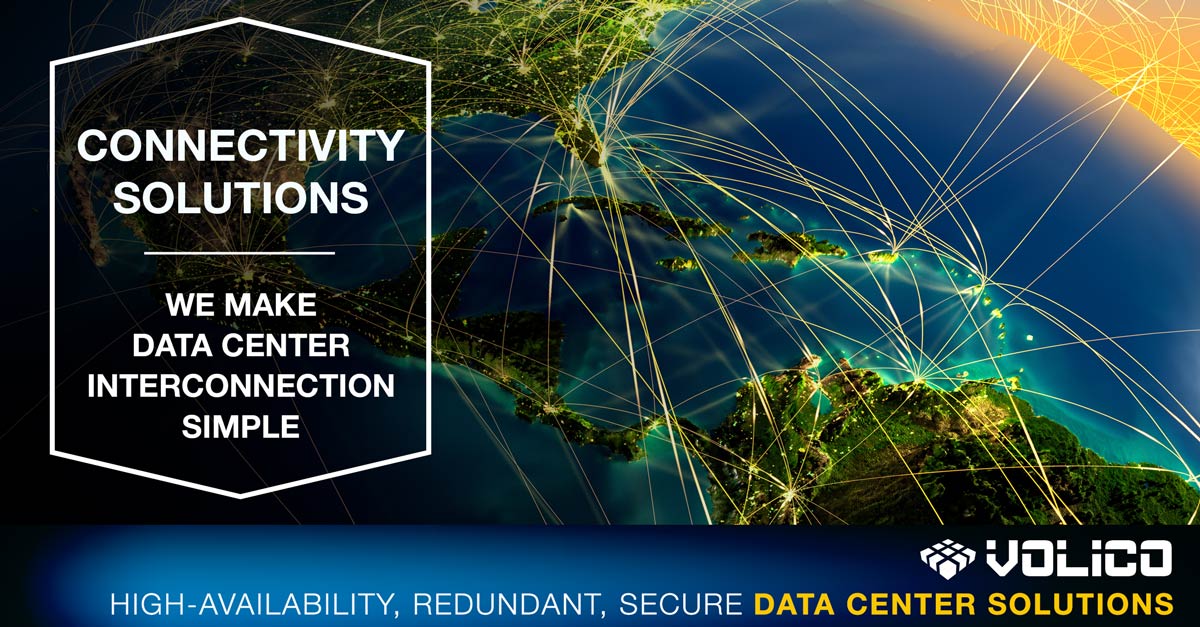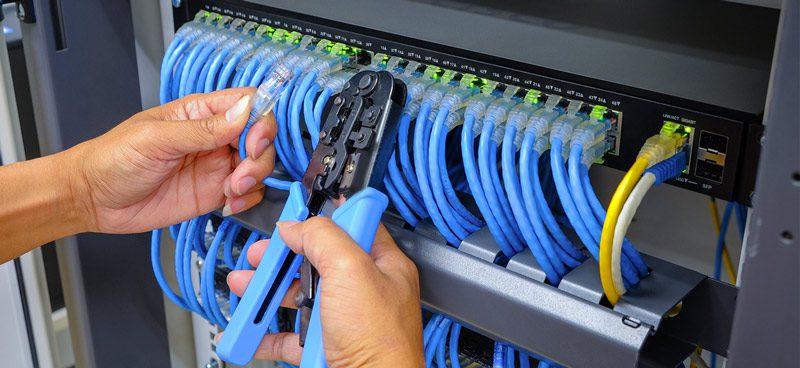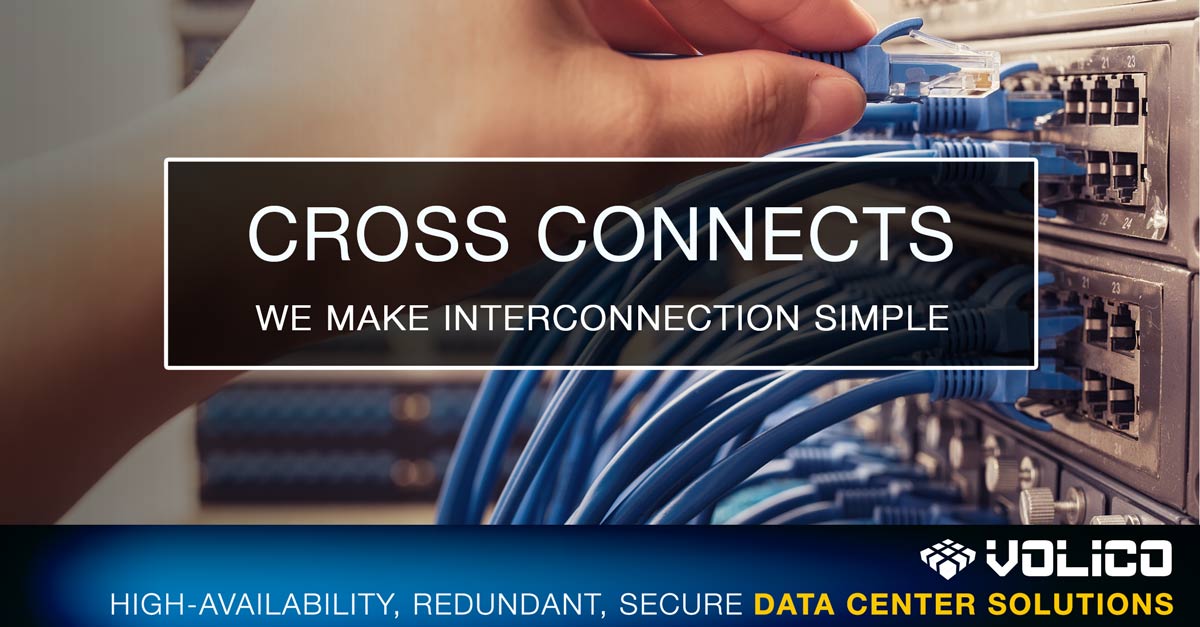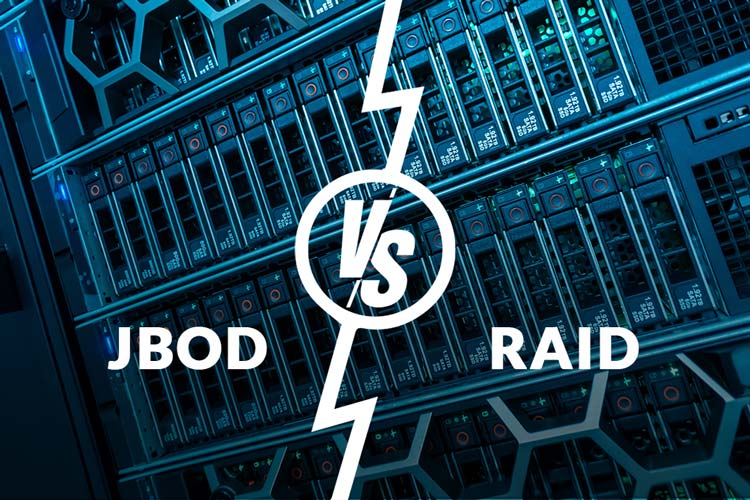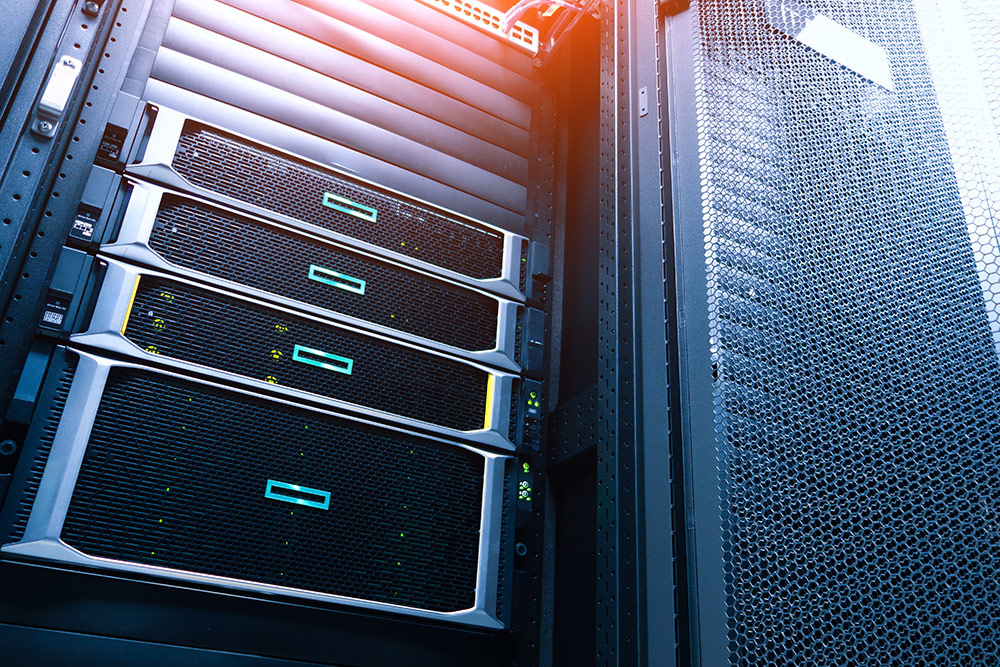The amount of data generated every day is truly astounding.
The current estimates stand at 2.5 quintillion bytes of data. And by 2025, there’ll be 175 zettabytes of data in the global atmosphere.
With such huge amounts of data being created and stored, forward-thinking organizations must focus on network performance. That way, they can deliver a seamless, fast, reliable customer experience.
In a data center world, interconnect, direct connect, and cross connect are all methods for connecting different network or cloud services, but they differ in their purpose and characteristics. Data centers must leverage interconnection, direct, and cross-connection to enhance network connectivity to help power digital transformation for business and cloud service users.
This blog post explains what these three configurations are and their advantages.
What is Interconnect?
Interconnect refers to the connection between two or more different cloud services, often located in different data centers or regions. This connection is typically made over a high-speed, low-latency network, such as a dedicated fiber-optic cable, and is designed to ensure fast and reliable communication between the services. Interconnect can be used for a variety of purposes, including data replication, backup and recovery, disaster recovery, and workload migration.
Interconnect involves creating an ecosystem that allows data exchange between an organization and its partners whose IT systems and applications are hosted in different public clouds.
Interconnection enables data exchange between businesses whose customers may also want to interact or transact.
A perfect interconnect example is when you use an airline’s customer loyalty program to rent a car or book a hotel room at discounted rates, thanks to your carrier’s alliance with a particular hotel or car rental agency.
For such a transaction, your contacts, payment info, and flight details will be automatically shared with the parties involved to complete the transaction and, in return, give you a seamless travel/vacation experience.
While everything seems smooth on paper, interconnection must come into play to help to execute the transition when the IT infrastructure of the parties involved is in different public clouds.
Interconnection offers the following benefits:
- Denser connectivity since the setup involves linking multiple IT systems and configurations.
- Better value for organizations looking for ways to connect with partners, customers, and employees at reduced latency.
- Organizations hosted in a colocation facility with interconnect service can benefit from lower latency, enabling them to provide better end-user experiences while enjoying cheaper data transfers.
- Interconnection allows organizations to bypass the public internet, significantly reducing the likelihood of attacks.
Volico Data Centers interconnection and network connectivity solutions allow organizations to complete transactions involving multiple parties smoothly and seamlessly.
We undertake to provide high-performance physical and virtual connectivity to your vendors, trading partners, and customers while ensuring your IT systems are reliable and redundant.

What is Direct Connect?
Direct Connect is a service provided by public cloud providers like Amazon Web Services (AWS), Microsoft Azure, and Google Cloud Platform, which allows users to establish a dedicated network connection between their on-premises infrastructure and the cloud provider’s data center. This connection is typically made through a physical port and is designed to provide a more reliable, consistent, and secure network experience than a typical Internet connection. Direct Connect can be used for a variety of purposes, including accessing cloud-based resources, transferring data, and running hybrid cloud workloads.
Direct connect is also known as a native onramp.
A while ago, most organizations used IT systems with multiple servers and public cloud solutions to store data and run applications.
However, this arrangement is no longer viable as digital transformation takes center stage.
Direct connect involves using a private dedicated network to connect to a private or public cloud.
In a data center, direct connect allows customers to link their colocated servers directly or through a Meet Me Room (MMR).
Volico Data Centers offers direct connection solutions that enable our customers to link their private IT systems to public providers without involving a 3rd party.
We offer high-quality direct connect capacity to allow our customers using cloud solutions to pass the following benefits to their clientele:
- Added security for private network connection into the cloud. And because customers don’t need to use VPN hardware, connections are faster.
- Save costs on cloud workloads because of the lower rates for dedicated networks.
- Ability to manage connectivity within their IT systems
- Superior speeds and latency for better customer experiences
- The flexibility to scale connection bandwidth
- Reliable connections. Direct connections help reduce outages and throttles that come with public connections.
Volico Data Center direct connect solutions can help eliminate the shortcomings of public internet connection, enabling businesses to shorten marketing cycles and reach customers faster.
What is Cross Connect?
Cross Connect refers to a physical connection between two different devices or networks within the same data center. This connection is typically made through a patch panel or a network switch and is designed to provide a direct and high-speed connection between the devices. Cross Connects are often used for connecting servers to storage arrays or for connecting different cloud services within the same data center. Cross Connects are typically more reliable and secure than Internet connections, as they are not subject to the same latency and congestion issues.
A cross connects involves connecting two termination locations in a data center using a physical, hardwired cord, cable, or jumper.
Picture this; Organization A has hosted its servers with Volico Data Centers. It trades with organization B, also co-located in our facility.
To trade and meet contractual agreements, organization A must send and access transactional data to and from organization B in real-time.
Even though the two trading partners can exchange data over a public connection, it makes more sense to use a cross connect.
A cross connection will involve using a hardwired cable to link the two companies’ servers, establishing a dedicated, private connection.
A cross connect is:
- More secure
- Cost-effective
- Reliable
- Efficient
Volico Data Centers cross connect solution delivers superior performance backed by reduced latency and top-notch security that is way above industry standards.
With Volico as your cross connect partner, you can increase your IT system’s performance and enhance traffic flow management.
The ripple effect is that your organization can offer more reliable and consistent experiences than public connections. All this while reducing data loss and ensuring rapid recovery in case of planned or unplanned outages.
In summary, interconnect, direct connect, and cross connect are all methods for connecting different networks or cloud services, but they serve different purposes and are used in different contexts. Interconnect is used for connecting different cloud services in different data centers, while Direct Connect is used for connecting on-premises infrastructure to cloud services, and Cross Connect is used for connecting devices within the same data center.

How MPLS Xconnects and VXLAN technologies are used as data center interconnects, and how do Volico Data Centers utilize them to provide pseudowire equivalents to cross connects?
MPLS Xconnects and VXLAN are both technologies used for data center interconnects, which enable communication between different data centers or between different segments of a large data center network. MPLS Xconnects provides a Layer 2 (L2) virtual circuit between two endpoints, while VXLAN is a Layer 3 (L3) overlay network that allows multiple virtual networks to be created on top of a shared physical infrastructure.
Volico Data Centers, a cloud and colocation provider, utilizes these technologies to provide pseudowire equivalents to cross connects, allowing customers to connect to their services across different data centers as if they were directly connected. This allows for greater flexibility in network design and can help to reduce costs associated with dedicated cross-connects.
When it comes to choosing between copper and fiber mediums for data center interconnects, there are several factors to consider. Copper cabling is generally less expensive than fiber and can be easier to install and maintain, but it has limitations in terms of distance and bandwidth capabilities. Copper cabling is typically limited to distances of around 100 meters for 10 Gigabit Ethernet (GbE) connections and 30 meters for 40 GbE connections, which may not be sufficient for large data center networks. Additionally, copper cabling may be more susceptible to electromagnetic interference (EMI) and crosstalk, which can impact performance and reliability.
Fiber, on the other hand, can support much longer distances and higher bandwidths than copper cabling. Single-mode fiber can support distances of up to 10 kilometers for 10 GbE connections and up to 40 kilometers for 40 GbE connections, while multi-mode fiber can support distances of up to 300 meters for 10 GbE connections and up to 400 meters for 40 GbE connections. Fiber is also immune to EMI and crosstalk, making it a more reliable option for high-performance data center networks. However, fiber cabling is typically more expensive than copper and requires specialized equipment for installation and maintenance.
In summary, MPLS Xconnects and VXLAN are both useful technologies for data center interconnects, and Volico utilizes them to provide pseudowire equivalents to cross connects. When choosing between copper and fiber mediums for data center interconnects, it is important to consider factors such as distance, bandwidth, performance, reliability, and cost.
VXLAN with EVPN BGP (Ethernet VPN with Border Gateway Protocol) is a technology that enables the creation of Layer 2 (L2) overlays over a Layer 3 (L3) network infrastructure. This allows for the creation of virtual L2 networks that can span across multiple physical locations or data centers while using the underlying L3 network for transport.
To use VXLAN with EVPN BGP as a Layer 2 interconnect, the following steps need to be taken:
- Create a VXLAN overlay network: This involves configuring VXLAN tunnels and VTEPs (VXLAN Tunnel End Points) at each site that needs to be connected.
- Implement EVPN BGP: EVPN BGP is used to distribute MAC (Media Access Control) address information across the VXLAN overlay network, allowing hosts in different sites to communicate with each other as if they were on the same L2 network.
- Configure L2 extension: L2 extension allows a virtual L2 network to be extended across multiple sites, enabling hosts in different sites to be on the same L2 network.
Once these steps are completed, hosts in different sites can communicate with each other as if they were on the same L2 network. This is particularly useful for applications that require L2 connectivity, such as storage protocols like Fibre Channel over Ethernet (FCoE) and virtual machine migration.
One advantage of using VXLAN with EVPN BGP for L2 interconnect is that it enables the creation of a virtual L2 network that can span across multiple sites without the need for a dedicated L2 network between sites. This can help to reduce costs and simplify network management.
Another advantage is that VXLAN with EVPN BGP provides a scalable solution for L2 interconnect, as it can support a large number of virtual networks and can be easily expanded as needed. Additionally, it provides flexibility in terms of network design, as virtual L2 networks can be easily created, modified, or removed as needed.
Overall, VXLAN with EVPN BGP is a powerful technology that enables the creation of virtual L2 networks across multiple sites, providing a scalable and flexible solution for L2 interconnect.
Are You Ready to Get Started with Volico Data Centers Connectivity Solutions?
High-quality connectivity and collaboration are essential growth elements in a world leaning toward digital transformation.
Interconnection with Volico Data Centers enables your organization or business to leverage a hyperconnected data exchange ecosystem. It also enables you to take advantage of reduced costs, low latency, and enhanced security.
Whether you’re looking for interconnect, direct connect or cross connect, Volico provides the tools your business needs to make the most out of your IT infrastructure.
Volico is a carrier neutral interconnection data center with data centers in Miami, Fort Lauderdale, Atlanta, and Chicago.
What Next?
Volico Data Centers is out to simplify interconnection.
We seek to deliver next-level interconnect, direct connect, and cross connect solutions that support your network and business requirements.
Whether you’re looking to lease dark fiber or use Wavelength Division Multiplexing (WDM) technology, Volico offers innovative solutions to increase your business’s capacity to network across multiple locations and anywhere in the world.
Volico Data Center interconnection solution promise:
- Better traffic flow management
- Speedy disaster discovery
- Reduce latency
- Global networking
If you have any questions regarding Volico Data Centers interconnect, direct connect, and cross connect, we’ll be happy to provide comprehensive answers.
Reach out to us as follows:
Call: (305) 735-8098 or Chat with one of our interconnection experts to discuss which solution best suits your business needs.
